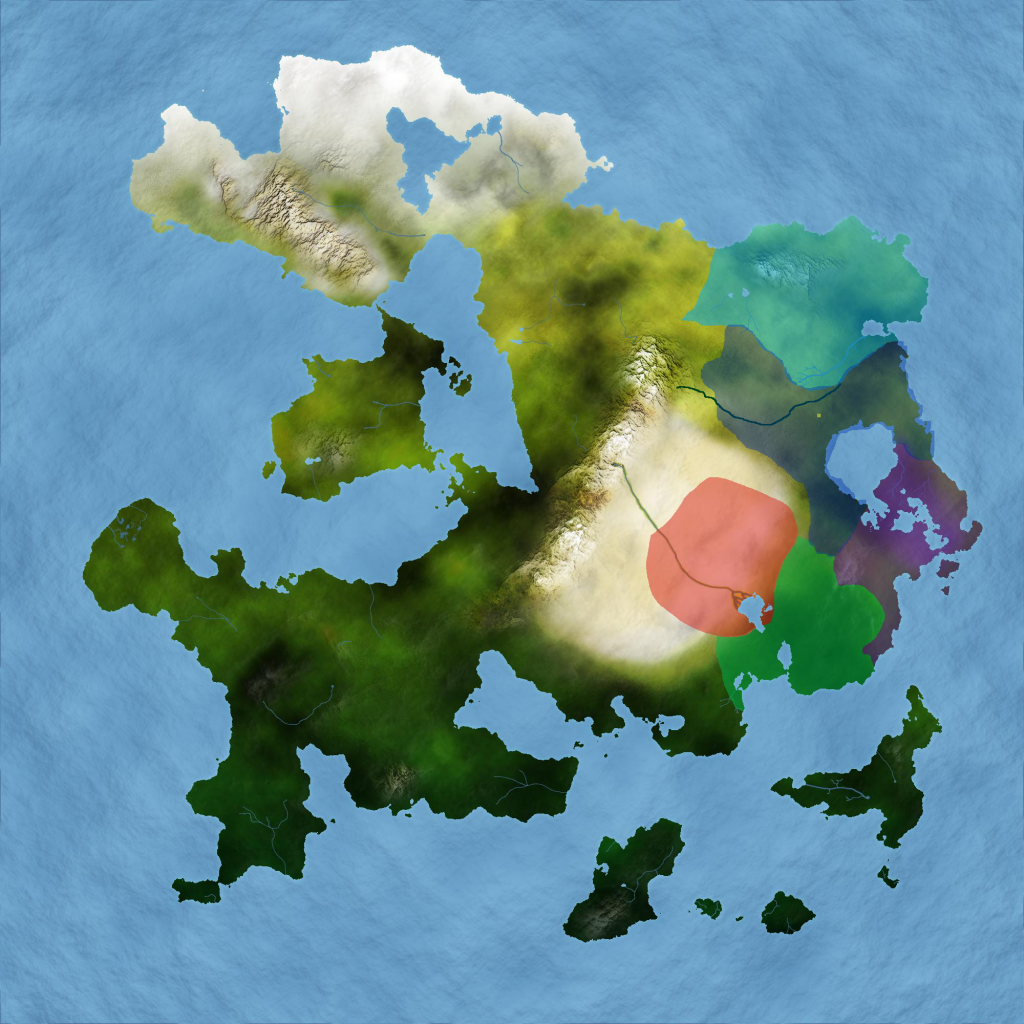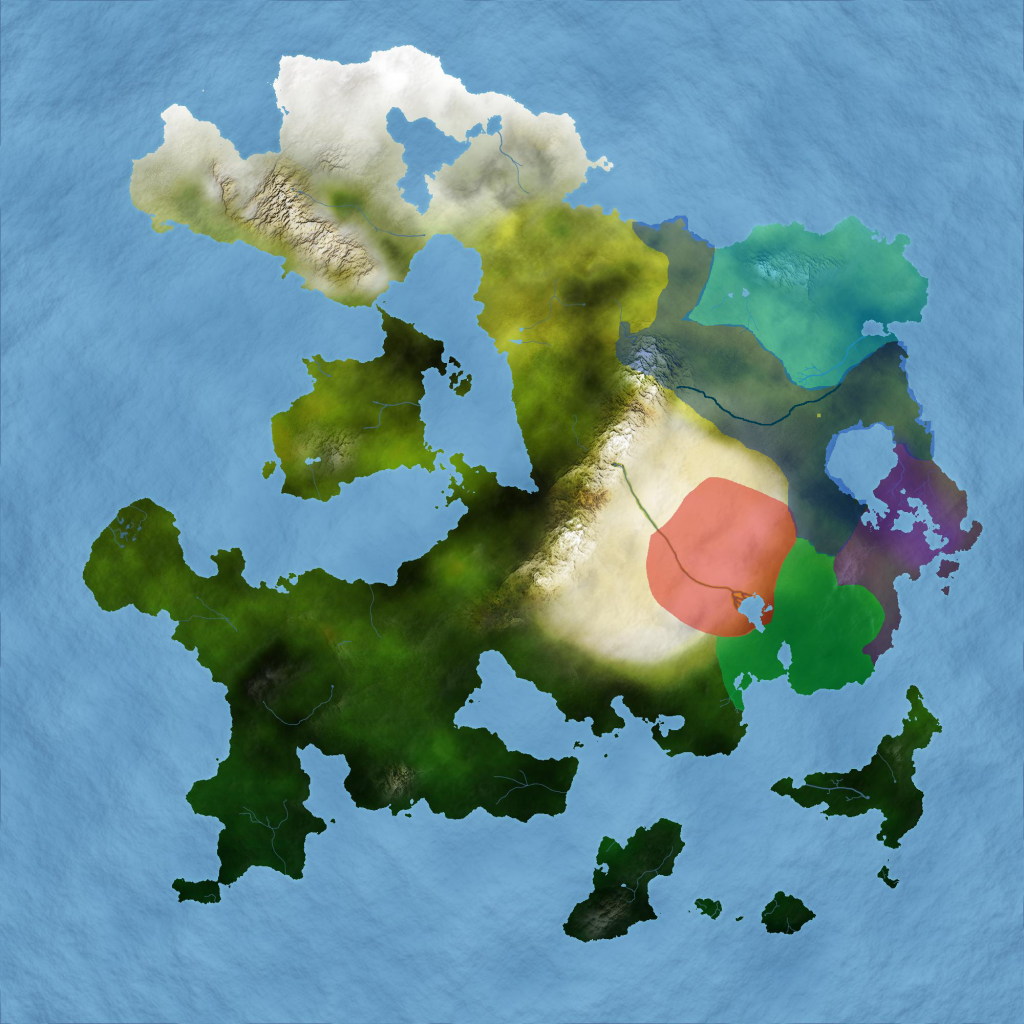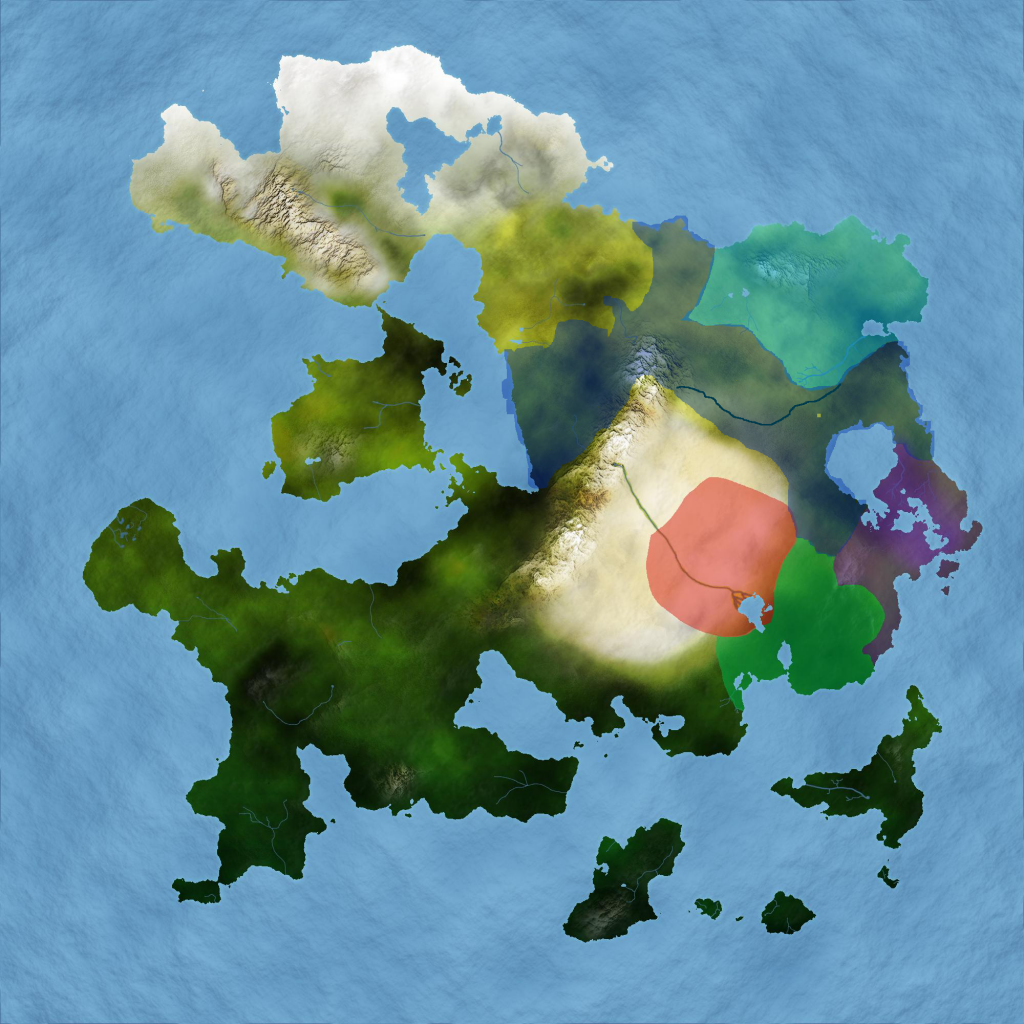| View unanswered posts | View active topics |
It is currently Thu May 14, 2020 10:38 pm |
|
All times are UTC - 5 hours |
Genesis Project: World Building
Moderator: Deciton_Reven
| Page 7 of 16 |
[ 233 posts ] | Go to page Previous 1 ... 4, 5, 6, 7, 8, 9, 10 ... 16 Next |
Genesis Project: World Building
| Author | Message | |||||||||
|---|---|---|---|---|---|---|---|---|---|---|
|
Site Admin 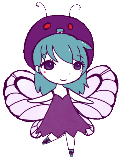 Joined: Mon Aug 11, 2008 7:32 am Posts: 7557 Country: 
Gender: Female |
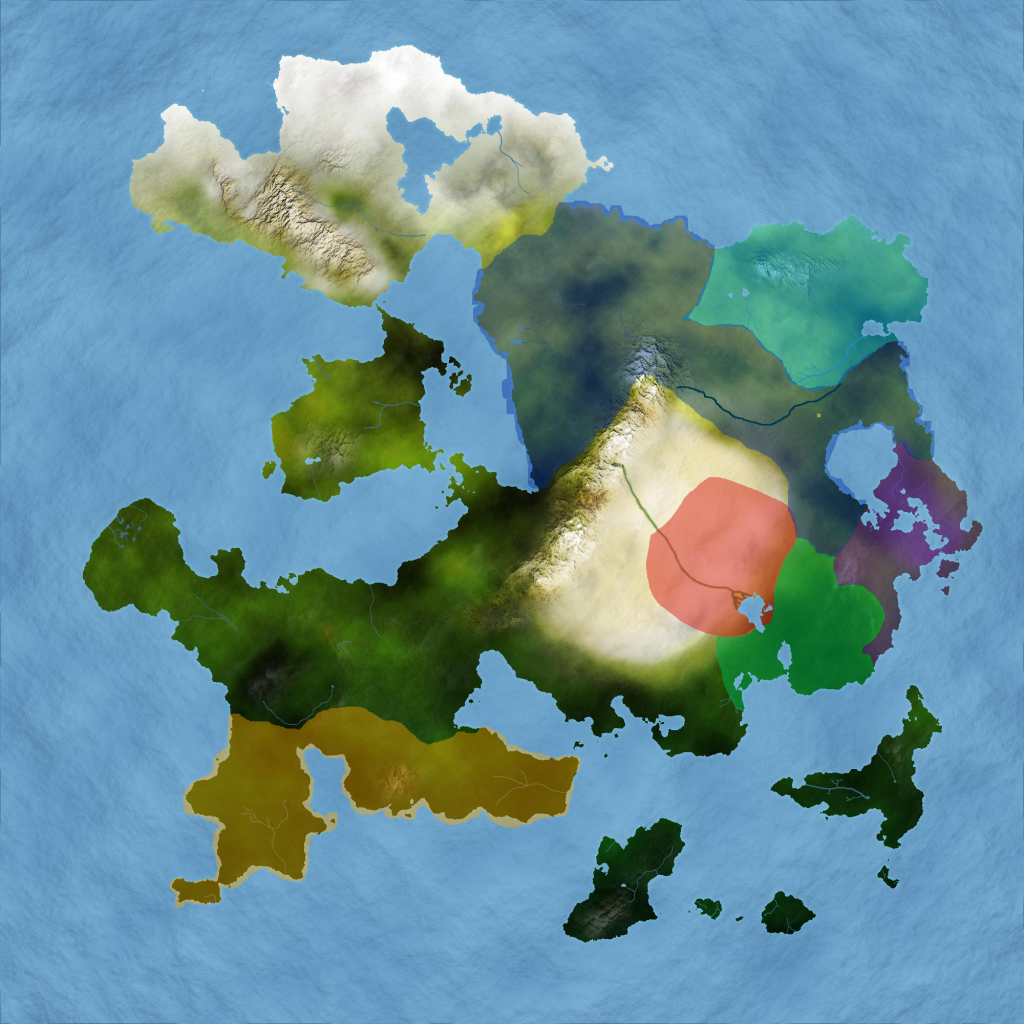 Name: Wrokokanee Area of origin: the southernmost area of the continental mainland (Wrokokaneelan) Complexion: Dark, Caramel - Nut brown Facial features: high hairline and close set eyes Hair: Silky texture, tight - loose curls , black Eyes: Predominantly varying shades of grey though hazel in minor occurrences. A ring of black encircles their iris. Average height: 5'9" (Women 5'7" - 5'10", Men 5'8"-6') Language description: Wrokokanalee - The language is thought to have developed as a means of describing their environment around them. Mimicking the sounds produced by nature, they gave many things around them their names, and developed a pattern through which their language developed into today. For example, the sound "sh" refers to water, mimicking the rushing of water, and thus any word with the "sh" sound typically refers to water, liquids, or anything related to water. Thus, traditional names have a second translation often referring to nature. (Ie: He brings fire; She dances in the wind, etc) In this same respect, in script the consonants are based off of these images from nature, which presently have been simplified through time into 1 - 4 stoke letters. The vowels are conversely quite simple; "O" is represented as a circle, "A" represented by a triangle, and "E" represented by a square. "U" and "I" do not exist. Words are broken down into syllable blocks comprised of a consonant and vowel. The language has a few particular sounds characterising it. The descript "wr" is used in place of the "r" found in the Common Tongue, (though r combinations such as "kr" and "tr" do exist). This sound has a slight whistle to it, as it refers to wind. Likewise "mn" is used in place of both "m" and "n"; it is almost hummed, referring to earth. Their accent typically comes out when confronted with these sounds. Additionally, sounds such as "ch" and "st" are represented by one letter. The language itself sounds very expressive, mirrored by the Wrokokanee people's vibrant lifestyle. They are known for speaking with their hands and eyes as they share their lives with their neighbours. Society: The Wrokokanee people were a nomadic hunter-gatherer peoples subsisting on the flora and fauna of the jungles that their territory is predominantly covered in. Initially comprised of various small tribes, they eventually banded together in order to assert their dominance in their territory. They developed a symbiotic relationship with the wroka, a large jungle feline, hunting alongside the fierce predator until it was successfully domesticated. They used the wroka for travel, hunting, and protection. Even today, the wroka remains an integral part of society in many of the nations that have been birthed from Wrokokanee tradition. They had a heightened respect for nature, both for its cruelty and its kindness; Mama Kroha is the Goddess of the Jungle who represents both these aspects. They saw themselves as a part of nature, wearing plants and flowers as accessories or braiding them into their hair. They were quick to master the art of weaving plant fibres into beautiful fabrics, (much of their history is preserved on tapestries). Creativity and vibrancy are an integral part of the culture with eloquent storytelling and oration being prized skills and they were known for the manner in which they dyed parts of their hair bright colours. Communal responsibility is incredibly important to the Wrokokanee, everyone is expected to contribute to the benefit of society as a whole. Thus, both women and men are expected to equally contribute in all things including warfare. Familial ties are second to communal ties, therefore everyone within the community is family. Background: The Wrokokanee hail from the southernmost tip of the continent, an area covered in vast swaths of wet jungle. An unforgiving locale, small tribes lived in trees above the ground where dangerous predators lurked, hunting and gathering when it was safe to do so. Eventually, out of necessity, these lesser tribes began to band together forming larger hunting groups; one of these groups brought the domesticated wroka into use. Together, they were strong, and soon they were able to establish themselves on the ground, building settlements surrounded by walls of wood. They grew as a people, a language developing among the tribes to unify them as one; the Wrokokanee. Crossing a land bridge, they came upon even more land and began to establish settlements. These lands were inhabited by smaller groups, but the Wrokokanee had evolved into a warmongering society capable of extinguishing those who rose up against them. Expansion ceased as they met a new culture group in the fertile lands close to a volcano.; evenly matched, both cultures agreed to stop fighting and the Wrokokanee turned to the east. The jungle in these lands were not as dense, nor filled with other peoples, thus the Wrokokanee quickly spread and claimed them as their own. Beyond the mountains, the jungles thinned into plains, where they came upon a new lesser culture. A distinct cultural shift away from warfare led to the absorption of this new culture. Mixing with the indigenous people, their children began to bear lighter skin of caramel and hazel eyes, little else is known about who these former peoples were. As they had little development in the way of seafaring, they did not attempt to cross the sea and their expansion came to an end. Of course, their society began to fragment due to the large geography covered, resulting in the nations of today. While the Common Tongue is known, Wrokokanalee, with its modern dialects, is the predominant language within these territories. _______________________________________________________________________ Name: Marosian Area of Origin: South of the river in Zyelar. (Maros) Complexion: White (Light tan closer to Alyria, Lenosia, and the Akkadites) Facial Features: Deep set eyes, sharp jaws, straight noses (may vary geographically) Eyes: Varying shades of brown (Rare occurrences of amber mixes along the borders of Alyria, Lenosia and Zyelar/Zypher, and blue in the northwest.) Hair: Brown, Blonde, (Strawberry-Blonde tendencies along border of the Zyelars/Zyphers) Average Height: 5'9" (Women 5'6"- 5'8", Men 5'8"- 5'10") Language Description: Common Tongue (Marolish) - This language reflects the incredibly adaptive nature of the people. The language is said to descend from similar origins of the Zyelars, and the Alyrians, though it evolved as the Marosian culture absorbed the traits of many other languages. The grammar structure remains similar, and some of the vocabulary is shared between these cultures, though little else is the same. "Y's" are not used as commonly as in Zyelar and Alyria, and while the language is somewhat phonetic, there are many odd conventions such as "ph" and "qu" and occasional silent letters, as seen in "comb" that make it difficult to guess how words should be pronounced and spelled. To the foreign ear the language seems muted, as if all consonants are not used to their full potential, (a result from the Faltic dialect), and much more guttural, (a trait adopted from the Eldunee and Haldish languages). In short, the language would sound like an early latinish-English. The script itself is shared between the Zyelar, Alyria, and Fals, having come from ancient runes that evolved into an alphabet. Maros however, after absorbing various cultures took various other letters that produced sounds unfound in the other three related languages. Society: Originally a society of livestock keeping woodsmen, their discovery of ore in the mountains led to the creation of tools and weapons made of iron. They evolved into a warrior society, raiding nearby territories to build up their own. Honour is highly valued within the Marosian society. One will do everything they can to preserve their reputation in the eyes of the public. Honour was an aspect that could be found in many parts of life; there was honour in profitable business, a large family, a bountiful harvest, and of course, combat. While women are permitted on the battlefield, it is strongly suggested that they stay at home to raise and give birth to children. Nevertheless, there is a strong sense of the individual being in charge of their own life. Background: Descended from the same people who fathered the Zyelars and the Alyrians, the Marosians come from a small area south of the river in Zyelar. They were farmers and woodsmen, living on the plains bordering the lush boreal forest. They lived simple lives until a harsh drought, (perhaps the same drought that caused the Zyelars to head north), nearly wiped them out of existence. This experience hardened the people, and saw a societal shift from passive farmers, to opportunistic raiders. As farmers they had domesticated the horse, and as woodsmen they had axes made of sharpened stone; these tools played substantial roles in their early conquests over the lesser cultures on the plains. The Marosians spread to the east, conquering lesser tribes until they reach the coast; and to the southeast, conquering the plains, though skirting along the desert. This period consolidated Maros' existence as a distinct culture, and saw an establishment of government, led by the High Warlord and the Honor Code. They established a standardized religion revolving around a god of war, Eratol, and a goddess of law, Gwendell. They had also adopted the earth god Arryst from Alyria, though calling him Aros. Having suitably established themselves, the Marosian army saw fit to conquer the lands found in the rich boreal forest. It was here that they ran into the people of Fals. The Faltics were a hunter-gatherer society distantly related to the Marosians, Zyelars, and the Alyrians, sharing a language very much like their own. They were well versed in archery and trapping, and produced beautiful fur pelts. The Faltics, not wishing to be destroyed as many of the lesser cultures had been by the Marosians, offered to teach the Marosians archery and supply them with their fur pelts, a product necessary in the colder temperatures of the north. The Marosians agreed, absorbing them into their territory and mixing with the people. Genetically, they were truly not much more different, though brown eyes had overtaken the predominant amber eyes from the days when Maros was solely a farming community. The Marosians also adopted the Faltic goddess of hunting, Irdessa. Marosian saw a slight adjustment in its pronunciation, taking on the Faltic habit of softening the pronunciation of hard consonants. Equipped for the cold weather and with deadly ranged weapons, the Marosians pressed onwards after stabilizing their new territory. They consolidated their presence along the borders of the Lenosians and the Pukutehtilikhekehtikuli, defeating the latter in combat. They also conquered the lands adjacent to the Zyelars, going north until they reached the coast. Most notable during this period however, was their encounter with the Eldunee peoples. The Eldunee, descended from the peoples of the north, were a smaller cultural group who inhabited the mountains. They were in a state of famine and were on the verge of extinction. The arrival of the Marosians seemed to seal their fate. That is, until it was revealed that the Eldunee not only lived on ore-rich mountains, but that they were talented metal workers. The Marosians chose to absorb the Eldunee to learn their metalworking secrets. Strengthened by the Marosian support, the Eldunee taught them the lay of the land, and helped them conquer the area to the southwest. The Marosian language had changed once again, adopting the guttural tone from the Eldunee people. The adopted Hok, god of the mountain and ores, into their growing pantheon, as well as a few other foreign gods. Having effectively conquered land from the east to the west, Maros became a substantial power on the continent. It was rich in resources and commerce, becoming a centre of trade for foreign goods, despite lacking major seaports. They flourished culturally as well, what once was previously Faltic folk songs, became recognized as typical Marosian music as it spread through the territory. The invasion of the Haldish peoples threatened to destabilize this bastion of society. Like the Eldunee, they were descended from northern people, however these were a much more fierce and competitive a people. Despite being a much smaller cultural group, they matched the armies of Maros with tenacity. However, after almost a century of war, the Haldish were defeated. Despite the lives lost, the Marosians did not succumb to anger. Upholding their ideal of honour, they absorbed the civilian population of the Haldish peoples, having made worthy opponents. The centuries afterwards saw a dissolution of the various cultures as they combined into one centralized Marosian culture. The language recognized as Common Tongue, due to it predominate use in the public sphere of not only Maros but other neighbouring cultures, became standardized. An evolution from what was once quite similar to Alyrian and Zyelar tongues, became mixed with the guttural northern languages of the Elundee and the Haldish peoples. Thus, it was called Marolish, as it is a mixture of all the peoples of Maros. The pantheon now had a collection of gods, both native and foreign. Blonde hair became equally as prevalent in the population as brown hair, while amber eyes became all but inexistent. Arguably, the genetic mix led to a strong peoples who made incredibly fierce fighters, though enlightened and innovative. Ruling one culture as extensive as Maros is quite the task however. The needs from one area would be different in the next, leading to the establishment of lesser provinces within Maros. The cultural unity fractured, the following centuries saw Maros separated into smaller, independent, and powerful kingdoms.The Marosian dominance continuing to thrive in the world even though it was divided. Marosian Timeline: show _________________ 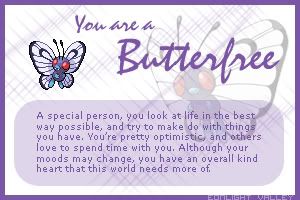  |
|||||||||
| Sat Oct 04, 2014 5:56 pm |
|
|||||||||
|
Site Admin  Joined: Mon Aug 11, 2008 7:32 am Posts: 7557 Country: 
Gender: Female |
For reference sake, the little yellow square is where Maros started, the black line was mainly for me to tell when it transitioned from plains to forest.
_________________   |
|||||||||
| Sat Oct 04, 2014 7:32 pm |
|
|||||||||
|
Site Moderator Joined: Mon Aug 11, 2008 6:37 am Posts: 1433 Location: .j Country: 
|
Update to map. Also I'm working on a culture for the large island on the west side right now.
 |
|||||||||
| Sun Oct 05, 2014 2:55 pm |
|
|||||||||
|
Site Moderator Joined: Mon Aug 11, 2008 6:37 am Posts: 1433 Location: .j Country: 
|
Just some thoughts here
How fantastical do we want the world to be? Do we want man eating plants, dragons, odd roaming beasts? unspeakable horrors? Also, it might help to add some common names to cultures. It'll help a lot later on when we have to make characters for certain cultures. |
|||||||||
| Tue Oct 07, 2014 6:23 pm |
|
|||||||||
|
Joined: Sat Oct 11, 2008 9:16 pm Posts: 12685 Country: 
Gender: Male Waifu: I'm married |
YES _________________ Meow /l、 ゙(゚、 。 7 l、゙ ~ヽ じしf_, )ノ |
|||||||||
| Tue Oct 07, 2014 7:09 pm |
|
|||||||||
|
Site Admin  Joined: Mon Aug 11, 2008 7:32 am Posts: 7557 Country: 
Gender: Female |
Yes, but they should be rare/mostly found in the wildlands.
_________________   |
|||||||||
| Tue Oct 07, 2014 7:26 pm |
|
|||||||||
|
Joined: Sun Jun 13, 2010 4:58 pm Posts: 2788 Location: Kalifornio Country: 
Gender: Anime Girl Currently Playing: Mandolin |
I think the cultures we have already should be placed in a box or something on the first page so we have a depository we can easy refer back to later on.
I'm not too big on high fantasy stuff, I think we shouldn't go crazy when it comes to what lives in the world. Make it grounded fantasy as opposed to something like Lord of the Rings and such, if not only because it's really overplayed and a bit boring and vanilla. |
|||||||||
| Tue Oct 07, 2014 7:43 pm |
|
|||||||||
|
Joined: Mon Aug 11, 2008 9:41 am Posts: 1913 Location: In a candy coated heart of darkness. (free hugs!) Country: 
|
I'd love a Gaia-esque "thing" that spits out odd roaming man-eating unspeakable horrors. Also dragons are a must for me, but they can only be savage beasts if they aren't wild animals. I think dragons should be highly intelligent, human, and potentially, beyond, levels of intelligence, but be highly antisocial as a norm, leading to low population and no real culture. (Or given the dragons would probably live for a long time naturally, they could each basically be a culture unto themselves.) Knowing we were going some degree of fantasy I was already coming up for a Zyelar mountain city whose buildings where mostly made of giant gourds (how convenient!) hanging down into a canyon area. Not really mystical but not practical nor logical and most unusual. As for names, I guess I could come up with some though writing them with letters is going to be weird, since their language is made of hums. Expect a lot of Z's and Y's. _________________ When my eyes be rollin' The haters get goin' The seeds I'm sowin' With a smile I'm flowin' And if I be trollin' Ya never be knowin' 'Cause when the haters get goin' My eyes just start a-rollin' |
|||||||||
| Tue Oct 07, 2014 7:54 pm |
|
|||||||||
|
Joined: Sun Jun 13, 2010 4:58 pm Posts: 2788 Location: Kalifornio Country: 
Gender: Anime Girl Currently Playing: Mandolin |
I think that the southwest of the continent should get a big culture group as well. I'm just going to go from general to specific in each section for the subcultures.
also I'll write out some names in a bit. Katyann Area of origin: Along the Southwestern coast (bordering the mountain range to start and then going along the coast to the peninsula, shaped kind of like a crescent). Complexion: Shades of white Facial Features: Long noses, often big nostrils, gaunt cheeks. Hair: Full spectrum from red to blonde to black. Eyes: blue, green, brown, hazel, and any combination. Average height: 165cm 5'6" Language description: Katyann language sounds hard and is spoken in a way that everything sounds accusatory and violent. All letter sounds are completely dependent on the combination of letters so that there is no sound like A in languages like English or German where it is "ah" or "ay." Instead, a letter is pronounced differently depending on what letter it is combined with, somewhat like a dipthong. The maximum combination of letters is 3 (e.g. onj), and a word can, on average, contain anywhere from 1 to 10 letter combinations. Even to trained ears the language is difficult to catch for non-native speakers. The Katyann use a writing system with over 100 letters, with the upper and lower cases being dissimilar (think ancient Greek). The origin is disputed, but it is believed to have been the work of Kajunej, who searched for a way to write the sounds they make. He spent years traveling into every major culture and, listening to their sounds, combining letters from completely different scripts that, when sounded together, created the sounds that they made. Therefore, the letters are written like graphemes such as Æ. Society: Katyanns are very similar as a whole, most of them are farmers and herders. They all technically branch from one single culture, but there are perversions within that culture that creates the current divisions of East, Middle, and West. In general, their traditional clothing is very colorful, with designs that designate which culture group they were from. They often live in simple wooden settlements that are mostly self-sufficient, willingly ignorant of what happens outside of their walls. There is a small movement within the culture that desires to see a unified Katyann people, but it is small because most older Katyanns do not care too much for unification. Cellonads (East): Some influence from the Marosians, especially around the borders. This group is the most technologically up to date, being closest to the center of the continent where all the cultural exchange and technological development takes place. They consider themselves, as the gateway to the North, to be the big brothers of their little Katyann siblings, and are the most militarily advanced because of this belief. Much of the core of the unification sentiment comes from here. Serbonads (Middle): Lying in the middle, the Serbonads are the least culturally independent, being a mix of the other two. They are mostly made up of isolated plots of tiny settlements. Belonads (West): Considered the most backwards by the other two, they lie on the peninsula, which makes them the most dependent on the sea, which is something that does not come to mind when foreigners think of stereotypical Katyanns. Because of this reliance on the sea, livestock and agriculture is focused on less with exception for the central areas furthest from the sea. Background: It is believed that the father of the Katyann people (Katyann himself) was the patriarch of a large clan that, for whatever reason, left the western island. However, this theory, though held as truth by the people, is debatable, as the people of the island are significantly different than the Katyann. Wherever the clan arrived from, they subjugated the northern part immediately upon arriving. They made their path along the coast, setting up new settlements as they came through. They reached the tip of what was the be the western cultural area when Katyann died. His conquests were split among his three children: Cellain, his oldest son, received control of the eastern area; Serbanonj, the youngest son, received the middle area; and Belani, his daughter, received the small amount of land in the west. Belani, just as power hungry as her brothers, used them to support her in taking the rest of the peninsula by offering her body in exchange for the conquest. Both brothers agreed to the terms, as Belani was incredibly fair. With the three siblings working in tandem, they conquered the rest of the coast and finally settled down. Belani had more than 15 children with her siblings, so that when all three of them died, their lands were split among all the children. Over the next couple centuries, this turned the once unified lands into many separate chiefdoms that no longer had any familial ties and only had significant cultural ties. Because the people became so split, it was easy for them to subjugate one another and be subjugated. Kingdoms have risen and fallen quickly in this area of the continent because of the inability to deal with the Katyann's sense of cultural kinship. No matter where the political borders lie, Katyanns see themselves as Katyanns and would travels miles to defend the cultural heritage of their brethren. This has also led to a recent nationalistic development in the Cellonads that calls for Katyann cultural unity and the creation of a purely Katyann state, not a state of oppressors or a group of Katyann states that stand alone. |
|||||||||
| Wed Oct 08, 2014 4:50 pm |
|
|||||||||
|
Joined: Sun Jun 13, 2010 4:58 pm Posts: 2788 Location: Kalifornio Country: 
Gender: Anime Girl Currently Playing: Mandolin |
Here's a rough culture thing.
 |
|||||||||
| Fri Oct 10, 2014 8:37 pm |
|
|||||||||
|
Site Admin  Joined: Mon Aug 11, 2008 7:32 am Posts: 7557 Country: 
Gender: Female |
K. Gonna finish off the south and the southern desert.
Leaving that volcano region open so that you can do whatever you've been playing. _________________   |
|||||||||
| Sun Oct 12, 2014 9:34 am |
|
|||||||||
|
Site Admin  Joined: Mon Aug 11, 2008 7:32 am Posts: 7557 Country: 
Gender: Female |
Ok, incoming mega post
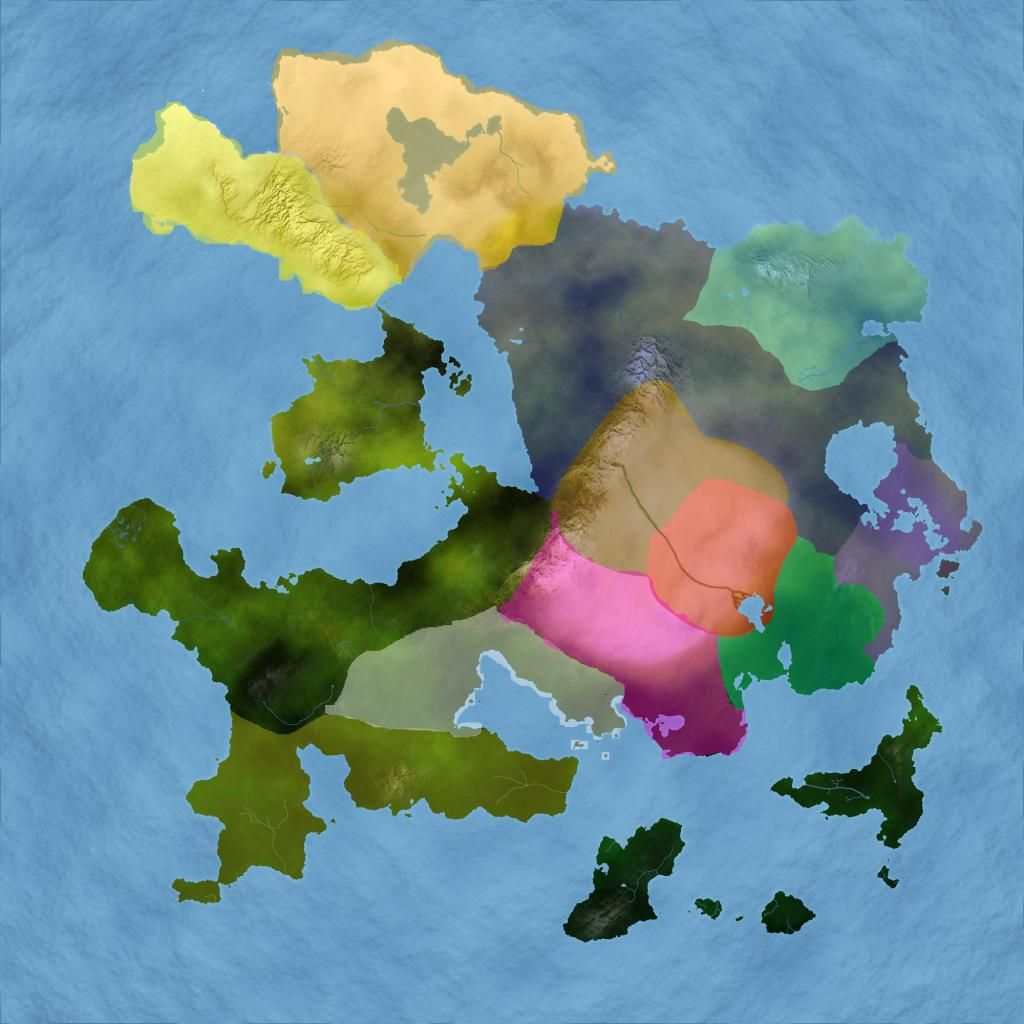 Name: Shoshanee Area of Origin: Southern Jungles (Shoan - White area) Complexion: Dark – dark tan approaching the desert boarder Facial Features: Full lips, wide eyes Hair: Thick, white with a bluish sheen in the light Eyes: Various shades of green Average Height: 5'8" (Women: 5'6 - 5'8", Men: 5'7"-5'9") Language Description: Shoanee - Though surrounded by various foreign languages, the Shoshanee have developed their own distinct language. It is an simple tongue, borrowing its grammatical structure from the desert languages. The language itself is a gentle tongue. Filled with the sound of "sh" it rarely uses consonants such as "k", "r" and "t", while "p", "l" and "o" are more commonplace. The soft spoken nature of the tongue makes it seem as if everyone is always reassuring each other, even in the midst of an argument. The language has a set of honorific titles for addressing different parts of society for those who are not friends; a monarch (shoshana), employers (poholo), a shaman (holano), the elderly (sholola) adults (sholo), young adult(losha), and children (shosho). Only after becoming friends with an individual are these formal honorific titles dropped. Society: Originating as a tribe subsisting on gathering, after they were chased away from their ancestral home by the Wrokokanee peoples they became farmers and coastal fishers. Their advancements in seafaring led to the colonizing of the coast and nearby islands. Cuisine of Shoan origin thus typically tends to be seafood or vegetarian dishes. As a people greatly concerned with respect, reason, and order they are known for their skills in diplomacy; they have successfully avoided war with all of their neighbours and they have a set of codified laws dictating the manner in which the people are governed. Temperance and wisdom are traits held in high regard by the people, and the elders are viewed with the utmost of respect. Shamans are integral parts of this society, presenting arcane wisdoms and wonders. Background: Originating from the southern jungles, the Shoshanee lived through collecting fruits and seeds that they found. When the Wrokokanee peoples arrived in their lands, the Shoshanee were not strong enough to defend themselves and thus fled north out of the dense jungles. They came upon fertile lands and thrived as farmers, with some of the Shoshanee heading east to the coast to become crab and lobster fishermen. As they progressed and united as a people, they delved into the art of geomancy. This had a very prominent effect on the people, as gems and minerals from the earth were used to bargain peace with many of their neighbours as well as establish themselves as an economic trading power in the south. Additionally they constructed cities that literally rose from the earth, providing them with the defense necessary to protect themselves from the expansionist Wrokokanee people until peace was established. Even today, the University of Popoa is a major centre for the study of geomancy and related earth magics. Common Names: Nolan (m), Sasha (f), Loa (f), Nahan (m), Gola (m), Popoa (m), Mishala (f) ---------------------------------------------------------- Name: Hararan Area of Origin: Along the river in the desert, pushed out by the Pukutehtilikhekehtikul and now reside in the southern desert, most of the population have taken home in the land outside of the desert and in the mountains. (Harar - Pink) Complexion: Tan Facial Features: Sharp jaw, prominent nose Hair: Varying shades of red and brown-ish red. Eyes: Varying shades of violet, from pale lavender to midnight Average Height: 5'7" (Women: 5'5" – 5'7" Men: 5'6" – 5'8") Language Description: Hararan is quite similar to that of the Akkadites and the Pukutehtilikhekehtikuli, clearly belonging to the same language family. In that respect however, they have taken a less complex route in a similar manner to the Akkadites with a grammar structure and script that would be most familiar to an Akkadite. As a spoken tongue it sounds incredibly similar to Akkadite to a foreigner, however it is very easy for a native to recognize their own tongue. Possibly due to a Shoshanee influence, "sh" is a relatively common sound, though conversely they have a much harder pronunciation that is similar to the Akkadites on consonants. The guttural tones last a fraction of a second longer than those produced by the Akkadites and "H" is heavily aspirated. Society: While originally the Hararan people were an agricultural society, living along the river in the desert, the arrival of the Kuli horde saw a near total annihilation of their people. They fled to the mountains where they re-established themselves and entered the desert becoming an aggressive mercantile clan. Eventually their arrival to the coast led to them discovering sea trade and becoming a major trade route to the island peoples. As a result of the many men who were lost in battles with the hordes, women took a central role in society rebuilding themselves as a strong cultural society. Thus, women are often viewed as the "surviving" sex, taking charge in matters of war, politics, hunting, trade, and other areas typically ascribed to men in various other cultures. Background: The Hararans were a minor culture living along the river, near where the original Ur Civilization existed. As the Pukutehtilikhekehtikuli Horde invaded the territory, the Hararans fought to protect their lands. Of course, they were no match for the horde, and they were nearly wiped out of existence with many of their men killed or captured. The women, children and elderly fled into the mountains as the Akkadites did, though they were wary of the other culture group and avoided them. During this period, many of the women had to take leadership roles managing farms and uniting the remaining survivors together. They suffered greatly, originally not being able to defend themselves from raiders, though through time they were hardened by their losses and a female warrior culture was born. A generation later, they had established their presence on the mountains to the Akkadites and the Katyanns. They ventured out into desert once again with their camels and claimed the ungoverned territories of the desert. Brutally, they wiped out the major raiding bands and established a major trade route in the desert connecting the southern economy of the Shoan to the northern economies of Maros through the Akkadites. They established fortress settlements to provide places of refuge for those travelling through the desert. In two generations, the ruling daughters of Harar sought to live outside of the realm of the desert. Thus, they ventured out into the lands that bordered that of the Shoshanee who were just establishing themselves along the coast. The Hararans cultivated great orchards in these lands, becoming known for their sweet desserts. Learning from both their Lenosian and Shoshanee neighbours they too began to voyage the sea and managed to successfully establish sea trading links with the island peoples. Today, passage through Hararan cultural lands is quite common for safe passage through the desert by traders. The Sisters of Lakshana is an all-female military unit that roam this area, existing even today. Common Names: Lakshana (f), Duhla (f), Kahmena (f), Ahmina (f), Surah (f), Hamid (m), Ahmen (m), Sabeen (m) -------------------------------------------------------------------------- Name: Farramids Area of Origin: Northern Region Beside the inland sea (Ferkland) Complexion: Light Facial Features: Rounded faces, large foreheads Hair: light hair, generally blond, or very light brown Eyes: blues, greens Average Height: 5'8" Language Description: Farramidic – A very guttural language, it uses tones which are produced from the back of the throat with very little tongue work. The language is related to many of the northern tongue languages such as the Eldunee, Haldish and Arlindic, and is thought to be the originator of these languages. The language itself sounds quite aggressive, quite different from the musical languages of the northeast. In the later years however, Marosian influence has led to a dominance of Marolish spoken, while the traditional Farramidic is spoken in more remote areas. Society: Originally a hunter-gatherer society, they settled and became farmers. Through war they eventually evolved into a warrior society as they sought supremacy in their territory. Their society revolves around strength and war. One must never be seen as weak, lest they lose their position of respect in society. Both men and women are expected to be competent fighters, though men are typically expected to wield two-handed swords and axes, while women are expected to wield short swords and shields. They have an incredibly deep respect for the tundra. Its unforgiving cold is a reflection of their people. Relentless in battle, which is often to the death. As a rite of passage, at the age of 14, youths are sent into the tundra with solely a handaxe and the clothes on their back. If they are worthy, the tundra will return the child back home alive in one week. Magic in this particular society is seen as mistrustful and a sign of weakness. Nevertheless, enchantments are often placed on weapons of warfare. Background: The Ferramids enjoyed a short period of relative peace, living in the frozen tundra of the far north. This made them a very hard and unbreakable people. As they settled, they sought favourable lands and began to conquer and destroy the neighbouring tribes around them. During this era of war, the Arlandic peoples who had just begun to settle on the other side of the mountains were quickly forced back towards the mountains. Likewise the Haldish peoples were pushed southwards which led to the bitter war between the Marosians and the Haldish. Claiming much of the frozen north, the Farramids eventually began to separate even among themselves, becoming various warring tribes. Common Names: Agnar (m), Rohik (m), Jorun (m), Torvik (m), Tonya (f), Farrah (f), Helga (f), Astrid (f) (Typical Viking Names, rough sounding names.) Alyrian Common Names: Arwyn (m), Arryn (m/f), Rowyn (m/f), Harrys (m), Kyara (f), Eryk (m), Merryk (m), Alyssa (f), Biatrys (f), Rory (m), Arrylia (f), Artys (m) (Usually have a y in the name acting as a vowel, but not always necessary) Marosian Common Names: Typical Eastern Names (Male names usually end in -os, female names in -a or -ia) Arthos (m) /Artia (f), Erik (m) / Erika (f), Karos (m)/ Kara (f), Dalos (m) / Dalia (f), Harris (m), Amara (f) Typical Western Names (Typical early English names, usually one or two syllables) Arthur (m), Erik (m) / Erika (f), Daken (m), Ellen (f), Karen (f), Ruth (f), Kendelle (f), Derrik (m) Wrokokanee Common Names: Ahmn (Anim) - He who heals the earth (m) Kowra (Korra) - The the winds weave the wood (f) Kramn (Kranim) - The lightning strikes the earth (m) Shawroka (Sharoka) - The elements in balance (f) Eewrosha (Irosha) - The blossom in the wind lands in the water (f) Wroka (Roka) - The winds fan the flame (m) Eemnahman (Iman) - The blossom of the earth heals the earth (f) Koahee (Kai) - The tree's blossom heals (m) Sheewro (Shiro) - The wind blows the blossom onto the water (m) (Umm...yeah there is a system with different letter combinations giving the name its meaning...ask for further advice >.>) (Yellow Territory is Arland, too tired to finish) _________________   |
|||||||||
| Sat Oct 25, 2014 8:56 pm |
|
|||||||||
|
Joined: Sat Oct 11, 2008 9:16 pm Posts: 12685 Country: 
Gender: Male Waifu: I'm married |
Will all the races be playable? The race I want to make should probably stay unplayable
_________________ Meow /l、 ゙(゚、 。 7 l、゙ ~ヽ じしf_, )ノ |
|||||||||
| Tue Nov 04, 2014 12:37 am |
|
|||||||||
|
Joined: Sun Jun 13, 2010 4:58 pm Posts: 2788 Location: Kalifornio Country: 
Gender: Anime Girl Currently Playing: Mandolin |
I should probably get this up
Pukutehtilikhekehtikuli (kinda easy to make these up, use tons of h's, k's and t's mixed with other consonants and keep in mind the only vowels are e i and u) male Hekit, Kituk, Kuy female Ihiliki, Hetii, Luritek Akkadites (double consonants when k) male Nebukko, Yatet, Akkatit female Hager, Kkukkit, Yekkuy Katyanns (v's, w's, j's, weird consonants!! use ugly slav names as a base) male Levatow, Vasimin, Gregovj female Semataj, Karilav, Waylev |
|||||||||
| Tue Nov 04, 2014 2:21 am |
|
|||||||||
|
Site Admin  Joined: Mon Aug 11, 2008 7:32 am Posts: 7557 Country: 
Gender: Female |
All the "races" will be playable. I'm curious though, what are you planning? Also, remember that for the most part everyone is "human". _________________   |
|||||||||
| Tue Nov 04, 2014 10:29 am |
|
|||||||||
| Page 7 of 16 |
[ 233 posts ] | Go to page Previous 1 ... 4, 5, 6, 7, 8, 9, 10 ... 16 Next |
|
All times are UTC - 5 hours |
Who is online |
Users browsing this forum: No registered users and 1 guest |
| You cannot post new topics in this forum You cannot reply to topics in this forum You cannot edit your posts in this forum You cannot delete your posts in this forum You cannot post attachments in this forum |


